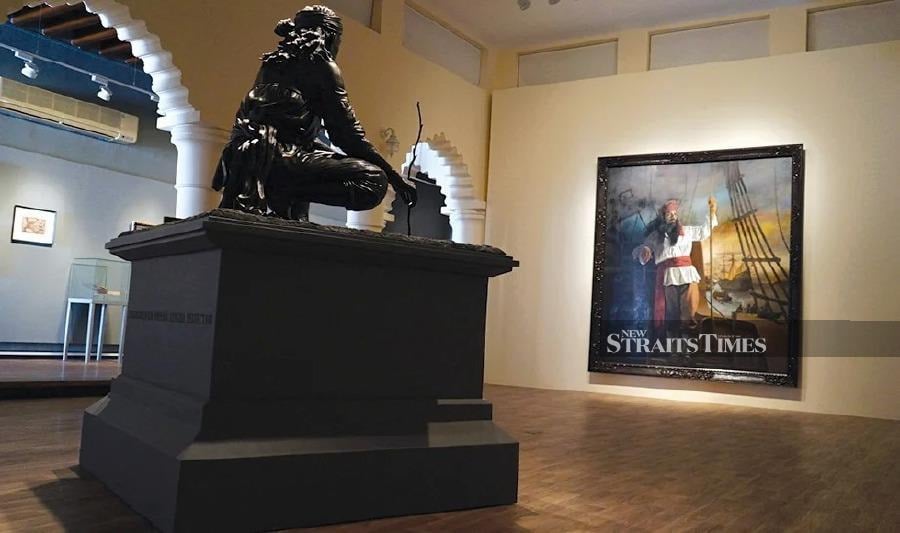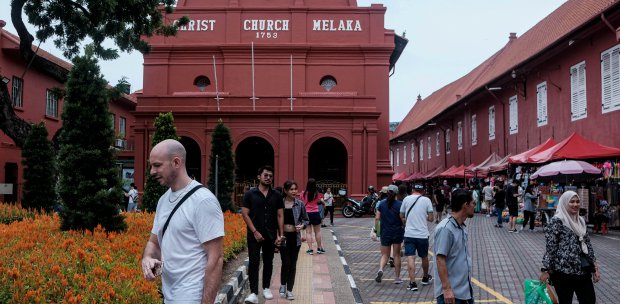MELAKA: Enrique of Melaka or 'Panglima Awang' is not just a fictional tale by author Harun Aminurrashid as depicted in a similarly titled novel published in 1958.
Instead, it is a recording of the historical account of Ferdinand Magellan (Fernão de Magalhães in his native Portuguese), the first person who is claimed to have successfully sailed around the world.
However, just like how the history of colonised nations often submerges the names of local figures, in the case of Panglima Awang, 'his master', Ferdinand Magellan, is more recognised.
This is despite the fact that according to history, Magellan had already been killed in the Philippines.
Recently, Universiti Islam Melaka (Unimel) unveiled the story of Panglima Awang through a public lecture delivered by Dr Surya Suryadi, a lecturer at Leiden University, in the Netherlands.
In his lecture, Surya said that Panglima Awang is better known as 'Enrique de Melaka' or 'Henry The Black' among western scholars. However, he added, this does not diminish the fact that he was a Malay who sailed around the world between 1511-1521.
According to historical records, Awang was said to have also fought against the Portuguese but was eventually captured, becoming a prisoner of war.
"Panglima Awang was later handed over to Magellan by Alfonso de Albuquerque. At that time, he might have been in his teens.
"At the time, Magellan wanted to leave Melaka in December 1511, after Melaka was successfully taken over by the Portuguese.
"Becoming a servant to Magellan resulted in his original name being changed to 'Henry The Black' or 'Enrique de Melaka'," he said.
According to Surya, based on the records of the writer, Antonio Pigafetta, who sailed with Magellan between 1519 and 1521, Awang always followed the Portuguese man wherever he sailed, including during the circumnavigation of the globe with five ships and 270 crew members.
"In addition to the Trinidad ship that he sailed with Magellan, the other four ships that they sailed together were San Antonio, Concepción, Victoria, and Santiago," he said.
Surya added that when Magellan was killed in an incident in Cebu, the Philippines, only one ship, Victoria, survived and made it to Portugal with 18 crew members, including Pigafetta.
Therefore, Surya said, through Pigafetta's records, the story of Awang is known in addition to the facts related to Magellan's death.
However, he said, there are two versions of the story. In addition to Pigafetta's version, another account by the assistant to the Spanish King, Maximillianus Transylvanus, also writes about Awang.
Transylvanus, he said, recorded his interview with the captain of the Victoria ship, Sebastian Elcano Juan.
"In Pigafetta's account, although he wrote that only 18 out of 270 crew members survived and arrived in Portugal, Panglima Awang is not listed.
"However, it is believed that Elcano knew about the existence of Panglima Awang, so a copy of Transylvanus's notes should be obtained to provide more details about Panglima Awang," he said.
Surya emphasised that Transylvanus's notes are believed to be kept in Spain and are capable of revealing the history of the figure clearly. This is because Pigafetta did not accurately state whether Awang returned to Melaka or Sumatra or perhaps settled in Cebu after the incident that claimed Magellan's life.
He said that so far, Transylvanus's records about Awang mention him as a Malay from Maluku, but Pigafetta records that the man is from Sumatra.
After hundreds of years, the story of Panglima Awang still attracts public attention, especially among the people in the Malay world. Moreover, in the 1940s and 1950s, many books about Panglima Awang were published. Among them is the writing of Mohd Taha Suhaimi published in Fajar Asia magazine in 1944 with the title 'The First Malay to Circumnavigate the World'.
He also said that Singapore's Straits Times English daily once published an article titled 'First Man To Sail Around The World Was A Malay' on October 22, 1955. Similarly, an article in Indonesia's Waspada newspaper titled 'The First Circumnavigator was an Indonesian' was published on July 2, 1956.
"However, the story of Panglima Awang became truly popular when it was novelized by Harun Aminurrashid with the title 'Panglima Awang'.
"In addition, it was followed by the novel 'Anak Panglima Awang' in 1961, published by Pustaka Melayu Singapore," he said.
He said that novels about Panglima Awang were also published in the Philippines in 1997 and 2002. Both were produced by Carla M Pacis; however, the novels were written from the Filipino perspective and became among the high school texts there.
Surya said that the story of Panglima Awang was also recorded by HM Tuah Iskandar in 2003, titled 'Enrique Mengundang Jauh'. In addition to Indonesia, it was also recorded in the novel 'Enrique Maluku', and 'The First Circumnavigator was an Indonesian', written by Helmy Yahya and Reinhard R Tawas, published in 2014.





